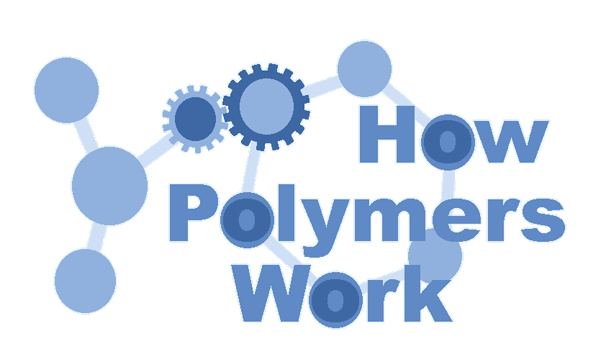
Summing Up Polymer
Solutions and Gels
Polymers are very special kinds of compounds that don't behave like small molecules. And they don't because of their huge molecular size. And it's that size that results in three unique properties that are attributed only to such giant molecules.
What properties, you might ask? Surely you've seen them before, in lots of materials that you use everyday. Those properties depend on molelcular differences, and applications depend on those properties. More accurately, the combination of properties that each polymer has depends on its composition and how it's transformed (or processed) into something useful.
OK, but just what are those molecular properties? In case you haven't visited the page in which they're explained, we can summarize them again along with how polymers pack in the solid state:
- Strength of intermolecular forces and their sum over long polymer chains.
- Molecular weight and entanglement,
which slow down motions of polymers.
- Crystallinity in the solid for some polymers.
- Crosslinking which is used often in elastomers.
All these properties determine the diverse states of macromolecular aggregation that polymers show. And those states are what you sense when you handle or use something made of polymers.
For instance, can you imagine a polymer in the gaseous state? Well, don't worry. There are no gaseous polymers. Such large molecules have such strong intermolecular forces and entanglement holding them together, that you would need to heat them at no less than 500�C to achieve evaporation. But at those high temperatures, you would no longer have polymers, but a big mass of decomposed or carbonized residue after all the decomposition products have left.
Solid polymers usually exist as amorphous glasses. However, when a certain order in their chain structure is present, some polymers can crystallize, like fibers, polyketones or syndiotactic polystyrene, to name a few.
The liquid state is rarely observed in polymers. Most of the time, when the temperature is gradually increased of a polymeric compound, it exhibits rubber-like properties, or becomes more fluid with a viscous or gooey consistency.
While solid polymers display a high state of aggregation, macromolecular solutions, particularly the dilute ones, are different for other reasons. In general, polymer solutions are highly viscous, are hard to stir and pour slowly. But if you increase the concentration of the polymer, they become so viscous that, at a certain point, intermolecular forces come into play again and the liquid character vanishes. We are talking now about a "gel" instead of a solution. You've seen gels in your own kitchens in the form of jello, fruit jellies and jams, and even dairy products like cream cheese and ice cream. Interesting, huh?
Would you like to learn more? Then let's look at each state of aggregation separately. Go to the pages linked below to find out about the various ways that polymers are different from other materials in the real world.

|
Return to Level Three Directory |

|
Return to Macrogalleria Directory |